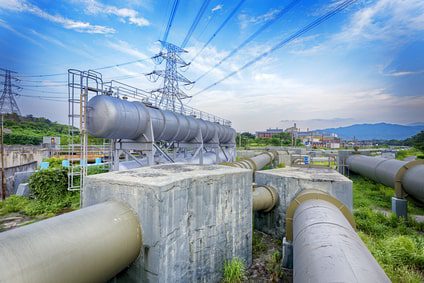4 Ways Oil Refineries Can Reduce Equipment Manufacturing Overhead Costs Through Maintenance Management


Oil refineries play a critical role in the global petroleum supply chain as there is a constant need to convert crude oil into other products. The operation of oil refineries is complex and involves a multitude of equipment systems including vast piping networks, distillation columns, and storage tanks. Creating an effective maintenance management program for these assets is a critical component in the efficient and safe operation of refineries.
At its core, maintenance management is a framework that outlines the priorities, strategies, and resources that an operation will use to coordinate its maintenance activities. For oil refineries, these maintenance activities (preventive, predictive, and corrective) are some of the most impactful in preventing incidents and maintaining an efficient production environment. Accidents in the oil & gas industry can impact not only employees but the environment as well, and the risk is certainly not to be taken lightly.
In this post, we explore five important ways that oil refineries can utilize maintenance management strategies to improve safety and reduce equipment manufacturing overhead costs.
Maintenance management these days typically involves the setup of a computerized maintenance management system (CMMS) through which various components are integrated. On the software side, this includes production scheduling and cost systems, while for hardware this can involve monitors, scanners, asset tags, and other components. Having all this information available through your CMMS software provides a level of clarity from which you can manage the entire plant’s maintenance activities.
Other core functions of a maintenance management program, such as identifying critical assets, tagging, setting up KPIs, and updating documentation including standard operating procedures, become easier with a fully integrated software system. This is perhaps the biggest overall benefit for the system – the ability to effectively track your KPIs and use data to drive improvements in various processes. If you don’t have visibility into the true performance metrics of your operation, it is nearly impossible to implement lasting improvements.
Automation is having a noticeable impact on the oil & gas industry and the need is only expected to increase over the coming decades. Like many advanced industries, there is a skilled labor shortage affecting the oil & gas industry, and automation plays a key role in maximizing the efficiency of existing operations while improving safety, security, and the ability to perform maintenance activities.
One of the latest technologies to impact automation in oil refineries is weather monitoring systems. These solutions can include sensing equipment such as seismic detection, atmospheric measurement, and oceanic level monitoring. With the potential for hurricanes, earthquakes, and violent storms in many parts of the world, these automated tools can give a real-time view of the conditions and any emergency maintenance activities that may be required to secure equipment.
Pressure and flow monitors also provide oil refinery operators with an automated multi-point view of processes that can be managed from a central CMMS. Refinery crews and maintenance professionals can use this data to measure the impact of maintenance changes and make decisions regarding planned maintenance and repairs.
Asset tracking allows factories, warehouses, and production plants to maintain constant oversight over their entire asset inventory. Oil refineries can make use of these solutions to give their employees quick and easy access to asset information, ensure accountability in asset management, and provide real-time reports for teams and executives alike. There are a number of benefits to integrating asset tracking into your maintenance management activities, including improved efficiency and cost reductions by highlighting underutilized equipment and tracking costs closely.
The inspection of equipment is a vital component of any maintenance management program. Measuring process parameters and tracking assets are important as well, but periodic visual inspections add an important dimension of information. Issues such as corrosion, leaks, and other hardware failures may not be noticeable without visually inspecting equipment. Inspection is about finding a balance so as to have enough oversight to proactively find issues early and prevent them from becoming much worse without wasting resources.
One approach to optimizing inspection is to utilize predictive analytics to identify potential points of failure within a system and proactively notify stakeholders to follow up for on-going management. Useful non-destructive inspection techniques are also emerging, which use technologies such as digital radiography and infrared thermography to allow engineers to inspect the inner layers of pipes or other equipment without the need for disassembly.
The oil and gas industry continues to face pricing pressure for crude oil and its derivative products that is likely to continue into the foreseeable future. In this environment, one of the key differentiators for oil refineries continues to be an aggressive push for lower costs and greater efficiency. Having a comprehensive maintenance management program that takes advantage of the latest in technology and best practices can have incredible returns for the investments made.
Our sales engineers are experts in automatic asset tracking, tagging and identification,a nd can answer all your questions. Get in touch now.
Lets Talk ›